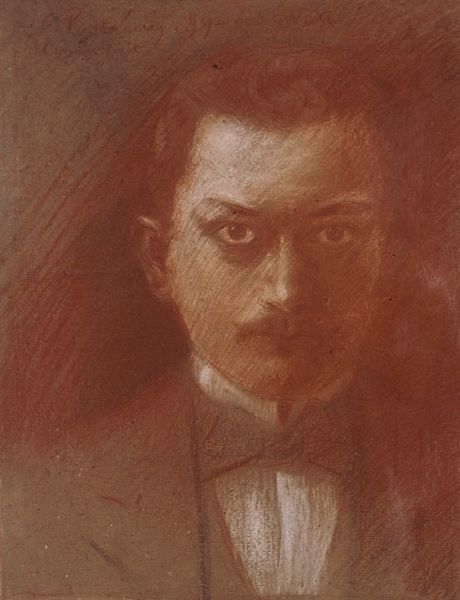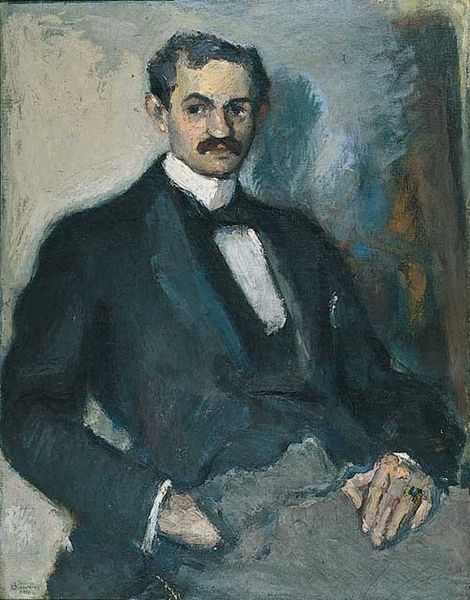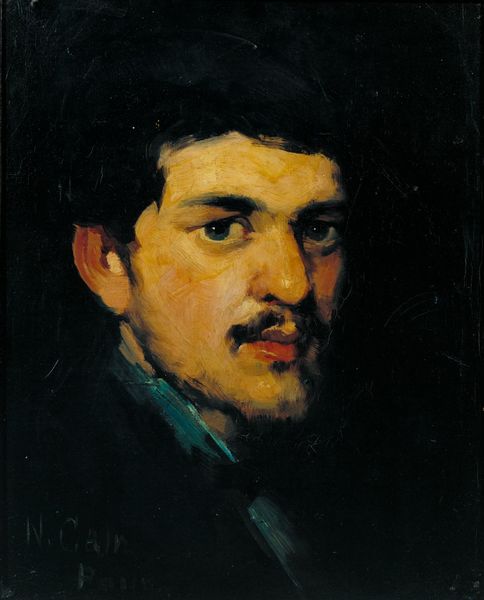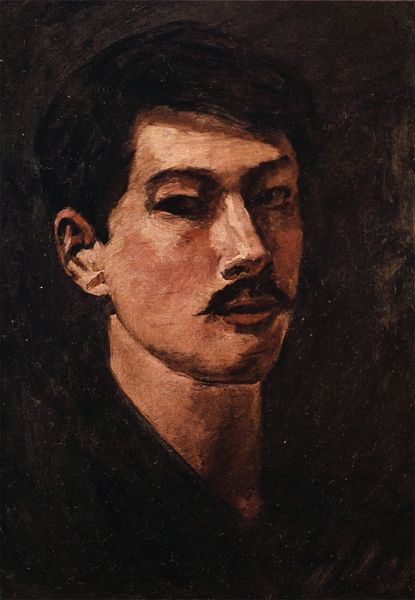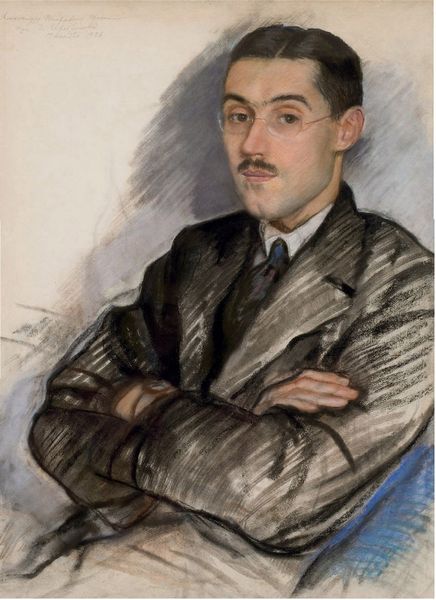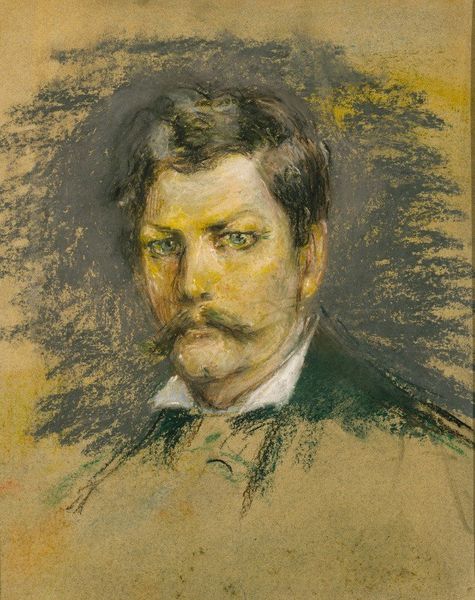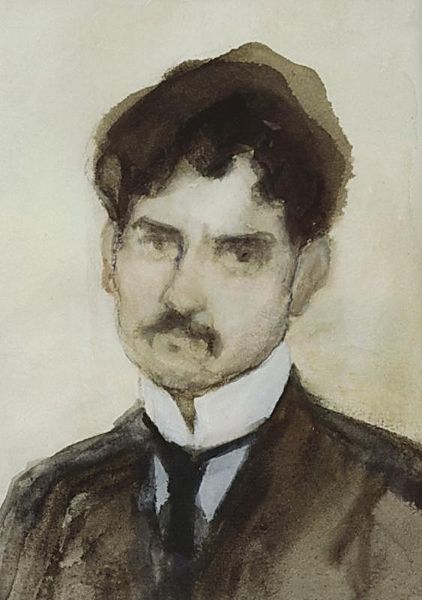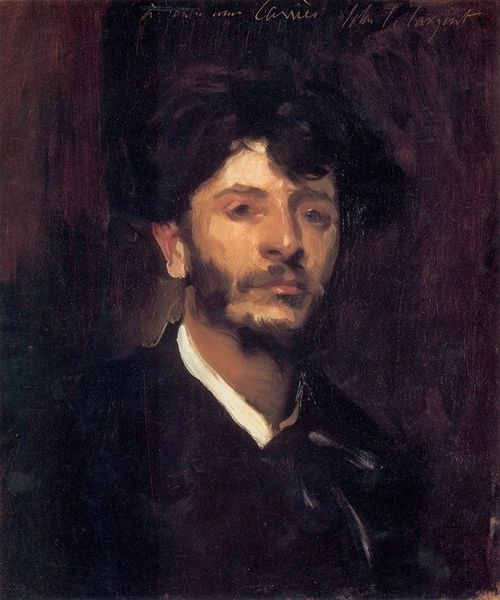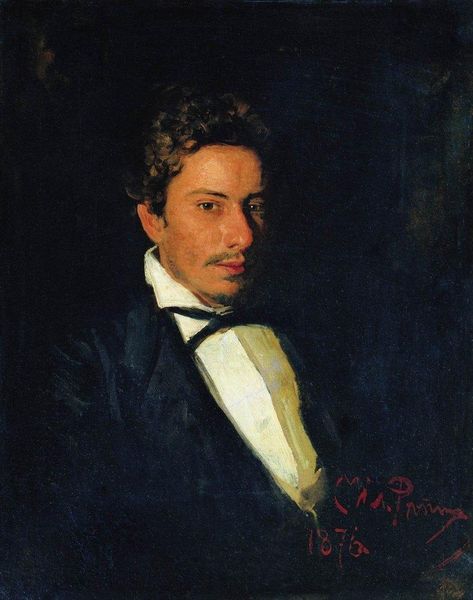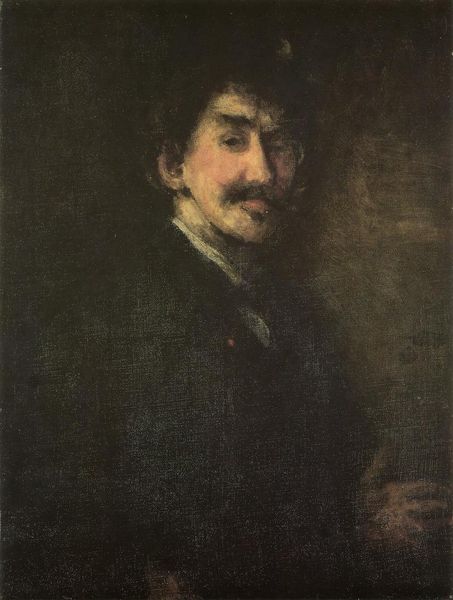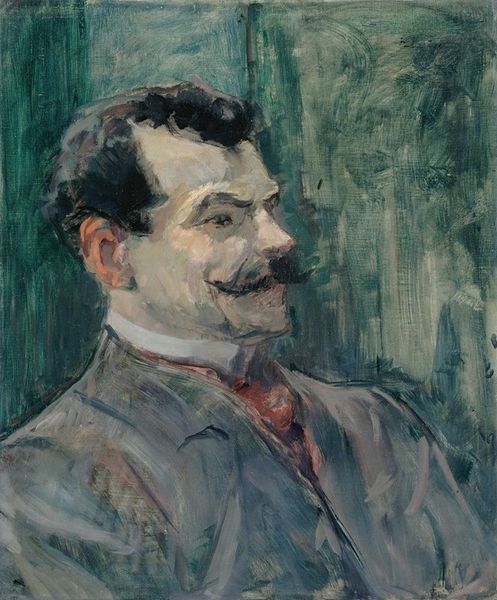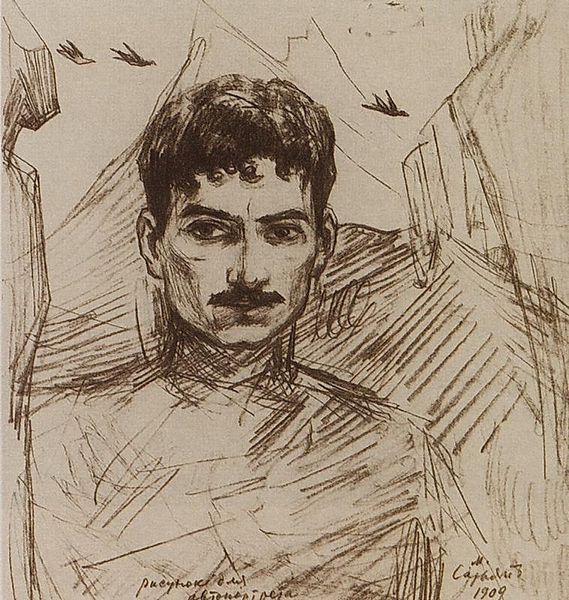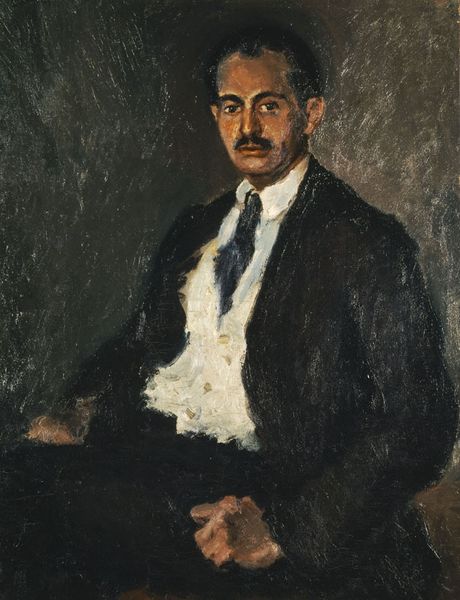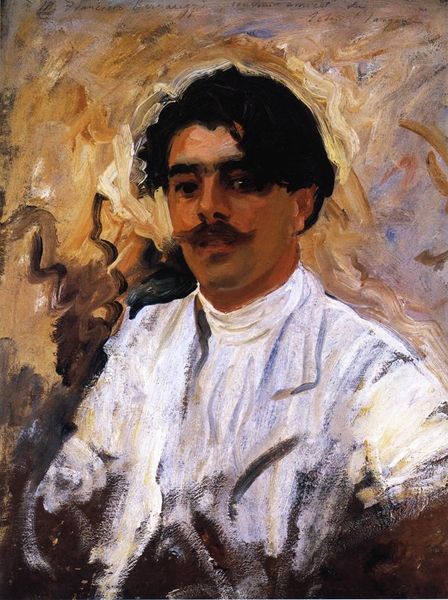
drawing, charcoal
#
portrait
#
drawing
#
figurative
#
self-portrait
#
charcoal drawing
#
symbolism
#
portrait drawing
#
charcoal
#
modernism
Copyright: Public Domain: Artvee
Editor: Here we have Franz von Lenbach's "Portrait of Franz von Stuck," created in 1892. It’s a charcoal drawing, and the thing that immediately strikes me is its somewhat unfinished quality, particularly in the torso area. What do you find most compelling about this drawing? Curator: It's precisely that "unfinished" quality, that apparent directness of process, which I find compelling. This isn't about illusionism, it's about the labor of making a portrait. Charcoal, a relatively inexpensive material, allowed for experimentation and speed. Was this a study for a larger painting? And how did Lenbach’s status in the art world, and the social expectation for portraits at the time, influence his decisions about presentation here? Editor: That's interesting. I hadn't considered the economic aspect of charcoal. Does that suggest it's challenging the established traditions of portraiture if it looks "unfinished"? Curator: Exactly! We see a breakdown of academic art expectations when an artist chooses to reveal the physical work and material, highlighting its potential for expressive immediacy over polished refinement. How would viewers at the time have reacted to seeing the process so clearly on display? Editor: So, the value is in seeing the mark-making itself, the labor. Instead of idealizing, he's presenting the reality of artistic creation, like breaking the fourth wall. And using that material – charcoal, it feels like it gives access. Curator: Precisely. It also opens a question about authenticity. Was this 'real' Lenbach at work, or was this careful appearance crafted to challenge the portrait market's norms of the time? Think of the cultural currency embedded in a seemingly simple drawing! Editor: It definitely changes my understanding of the piece. It makes it less about just capturing a likeness, and more about a statement about artmaking itself. Curator: And what the role of the artist should be within that culture. Thanks, I have a new appreciation for how this particular method speaks truth.
Comments
No comments
Be the first to comment and join the conversation on the ultimate creative platform.
